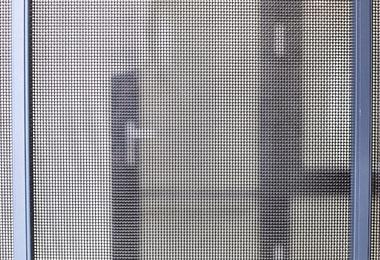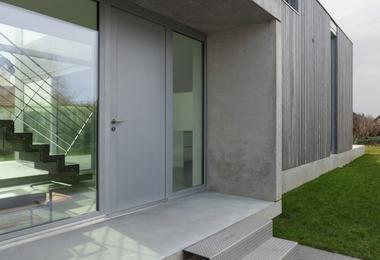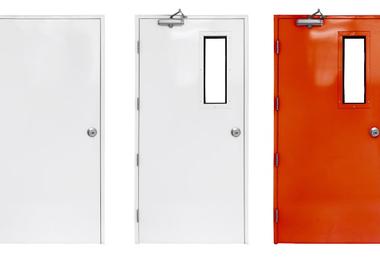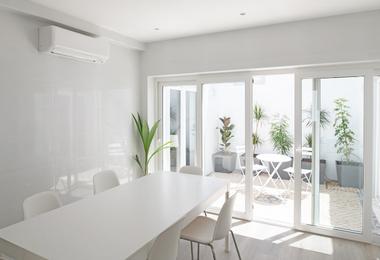Doors Types

Storm Doors vs. Screen Doors: What’s the Real Difference?
During Canadian winters, cold drafts can penetrate even well-sealed doors. A storm door provides an extra layer of protection to address this issue. That’s precisely where storm doors come in. A storm door is a secondary, outer door installed in front of an exterior access door, designed to add an extra layer of protection against weather extremes.

Fibreglass vs Steel Doors: Which One is Right for You?
When choosing an exterior door, homeowners often weigh options between fibreglass and steel, two popular materials with distinct properties. Each has its strengths depending on design preferences, location, and intended use.

How to Choose Fire-Rated Doors for Enhanced Home Safety
Fire-rated doors may resemble regular, heavy-duty doors, but their internal structure is engineered to resist fire and smoke for a specified period. Fire-rated doors are designed to withstand high temperatures and slow down the spread of flames and smoke for a specific duration, often giving building occupants and first responders crucial time to act.

Sliding Doors vs. Bi-Fold Doors: Pros, Cons & Design Impact
When choosing a door system for your home or renovation project, understanding the fundamental differences between sliding and bi-fold doors is critical. Each type brings unique mechanical designs, spatial requirements, and aesthetic outcomes.

The Advantages of Customizing Sliding Doors
Standard sliding doors are manufactured to fit a general opening size, relying on mass production to lower costs. But here’s the problem: not all homes are created equal. Custom sliding doors, on the other hand, are precision-built to suit the exact dimensions, style, and performance needs of your home.

Custom Doors vs. Standard – Which Is Right for You?
When it comes to your home, the front door is the first thing that will leave the most lasting impact on the visitors. Whether you're welcoming guests or arriving home after a long day, the door sets the tone for the entire house. But do you settle for a standard door or invest in custom doors that reflect your personal style and provide long-term benefits?
- Maritimes 6
- Product Comparisons 20
- Buying Guides 23
- Doors Types 26
- Energy Efficiency and Sustainability 31
- Home Improvement 23
- Installation and Replacement Tips 22
- Local Guides 41
- Maintenance and Repairs 29
- Manufacturers Reviews 7
- Pricing and Financing 14
- Room-Specific Windows 13
- Safety and Security 9
- Seasonal Tips 7
- Window Styles 12
- Window Types 40
- Past Projects



